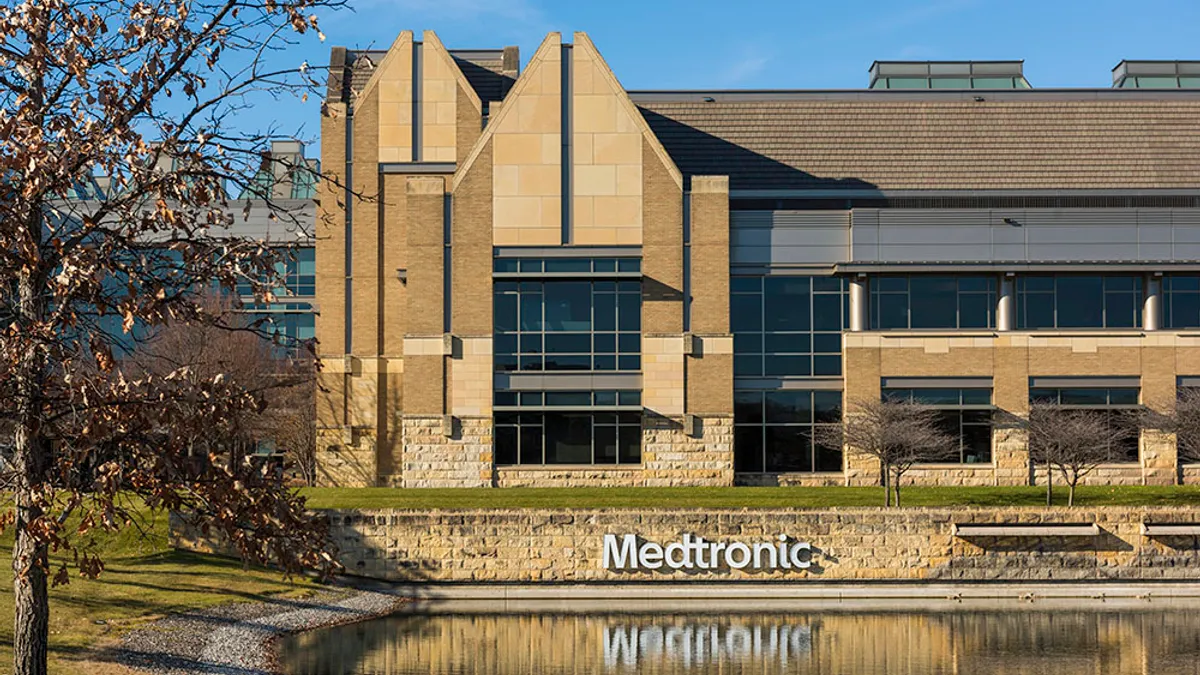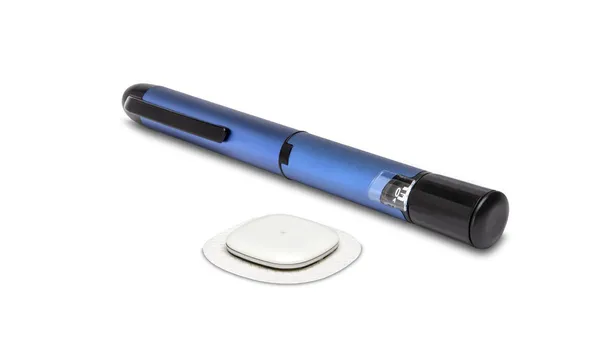Corporate spinoffs are redefining the medical technology sector, as executives look to sharpen the focus of their operations, boost revenue and profit, and improve investor returns.
Parent companies are taking aim at the “conglomerate discount,” a phenomenon where large organizations are valued at less than the sum of their component businesses, said Jim Welch, global medtech leader at consulting firm Ernst & Young.
While spinoffs tend to underperform the market in their first year, they outperform over a three- to five-year timeframe, according to a recent analysis by EY and Goldman Sachs that looked at the transactions across a range of industries.
“We've seen a lot of critical thinking about portfolio and capital allocation that's really come to the forefront now,” Welch said in an interview.
Newly separated companies also tend to be active on the M&A front. “They have their own capital in place, and they can make their own decisions,” he said. “That’s definitely a lever that we see them pull right out of the gate.”
Here are three spinoffs that reshaped the medtech landscape over the past year, and three more that are in the works.
GE HealthCare charts its own course
Since separating from industrial conglomerate General Electric in January, GE HealthCare has raised its full-year sales outlook while navigating a capital equipment spending slump and an anti-corruption campaign in China’s medical sector, both of which have challenged rivals Philips and Siemens Healthineers.
The imaging systems maker is focused on reducing costs, has a healthy order backlog and is benefiting from several new product introductions, GE HealthCare executives said on last month’s earnings call.
“The setup is good for 2024,” said CFO Jay Saccaro.
GE HealthCare also has “doubled down” on its investments and work in machine learning, as part of a strategy to facilitate precision medicine in patient diagnosis and care, CEO Peter Arduini told an investor conference in September.
The company recently announced a series of artificial intelligence-driven projects, including a partnership with the Mayo Clinic that will focus on targeted cancer therapeutics among its efforts and a collaboration with Novo Nordisk to develop an ultrasound treatment for diabetes and obesity.
Meanwhile, its Caption Health subsidiary, which GE HealthCare acquired in February for $127 million upfront, received a $44 million grant from the Bill & Melinda Gates Foundation to develop AI-assisted ultrasound technology, aiming to improve health outcomes in lower-income countries.
“In the future, most of your primary care physicians, if not all, are going to have a hand-held ultrasound,” Arduini said at the investor event.
Johnson & Johnson sheds consumer unit
Johnson & Johnson spun off its consumer brands, including household names Tylenol, Listerine and Band-Aid, in May to form a new company called Kenvue. An initial public offering and a debt offering raised $13.2 billion in cash for J&J, while freeing the healthcare giant to focus on its larger pharmaceutical and medical device businesses.
J&J reported double-digit sales growth in its medtech segment in the third quarter, driven by strong demand for its cardiac ablation catheters to treat atrial fibrillation, and raised its full-year sales and earnings guidance.
The company is taking steps to restructure its slower-growth orthopedics business, with CEO Joaquin Duato telling investors on the October earnings call that J&J will exit less profitable product lines in that segment.
The acquisition of heart pump maker Abiomed provides a high-growth, long-term revenue stream and “helps reduce J&J's exposure to risks in its Innovative Medicines division like patent expirations and drug-pricing reform,” analysts at Moody’s Investors Service said in a report last month.
Less than a year after it paid $16.6 billion for Abiomed, J&J is “in a very good position” to pursue new M&A opportunities, whether large or earlier-stage deals, to complement its current portfolio or pipeline, CFO Joseph Wolk said on the earnings call.
A slimmer Danaher focuses on life sciences
Danaher completed its evolution into a leading life sciences and diagnostics company in September with the spinoff of its water testing and product identification operations into the standalone Veralto.
Danaher “is a pure play bioproduction, life science research and diagnostics company that is already very well-regarded by customers and investors alike,” TD Cowen analyst Dan Brennan wrote to investors in a September report. He cautioned, however, that the company is facing volatile market dynamics that include weaker China demand and sluggish biopharma spending.
The challenges were evident in the third quarter, when Danaher posted a 10% year-over-year sales decline, hurt by customers’ ongoing destocking of inventories built up during the COVID-19 pandemic.
Long term, the company foresees rising global demand for biologic medicines, with the U.S. on pace for a record year of approvals in indications such as Alzheimer’s disease and several cancer immunotherapies.
“These positive trends reinforce our conviction in the tremendous opportunity ahead in the biologics market and the high-single-digit long-term growth outlook for our leading bioprocessing franchise,” Danaher CEO Rainer Blair said on the company’s third-quarter call.
In August, Danaher announced it would buy Abcam, a maker of antibodies, reagents, biomarkers and assays, for $5.7 billion, furthering its strategy to help map diseases and accelerate the drug discovery process.
Baxter kidney care spinoff on track for 2024
Infusion pump maker Baxter began the year by announcing a restructuring to drive faster growth, including plans for a spinoff of its renal care and acute therapies units in 12 to 18 months.
The strategy also called for divesting the company’s biopharma solutions business. Baxter completed the sale of that business, which will be called Simtra BioPharma Solutions, to private equity firms during the third quarter.
Baxter will use the $3.7 billion in after-tax proceeds from the deal to pay down debt, CEO José Almeida said on the company’s third-quarter earnings call. The biopharma solutions sale follows Baxter’s $10.5 billion acquisition of connected care specialist Hillrom in 2021.
Baxter has reorganized its remaining operations into four new segments: medical products and therapies, healthcare systems and technologies, pharmaceuticals, and the kidney care business, which will be spun off into an independent publicly traded company.
The organizational structure for the new company, to be called Vantive, is expected to be finalized by the end of the year, Almeida said on the call. Vantive will be led by Chris Toth, previously CEO of Siemens Healthineers subsidiary Varian, who joined Baxter in June as president of kidney care.
Baxter expects to launch the spinoff by July 2024, Almeida said.
3M makes progress on healthcare spinoff
Industrial conglomerate 3M has recruited three seasoned medtech executives to lead its healthcare business as it prepares to spin it into an independent company called Solventum. Former Zimmer Biomet CEO Bryan Hanson became CEO of the 3M health business in September, and former Insulet CFO Wayde McMillan joined last month as CFO. Healthcare industry veteran Carrie Cox was named board chair of the standalone company.
The healthcare split is now expected to occur during the first half of 2024, 3M CEO Michael Roman said last month on the company’s earnings call. First announced in July 2022, the transaction was initially targeted to close by the end of this year.
Although it is taking longer than expected to complete, work on the spinoff is progressing with the build-out of the leadership team, said Roman, and “we don’t see any hurdles ahead of us.”
The healthcare company will be focused on wound care, oral care, information systems and biopharma filtration.
“We see it as being ready to stand forward as a leader and are really confident in the leadership that will take the company as a standalone,” Roman said.
Medtronic to divest monitoring, respiratory interventions
Medtronic is now aiming to divest its patient monitoring and respiratory interventions businesses in the first half of its fiscal year 2025, the company said in a September investor presentation.
The company is divesting non-core assets while increasing investment in high-growth areas of medtech amid a multiyear restructuring effort to improve its financial performance. Medtronic, one of the world’s biggest medical device makers, sees atrial fibrillation, diabetes, surgical robotics and structural heart as markets where it can achieve higher revenue growth rates, CEO Geoff Martha told the investor conference.
As part of this strategy, Medtronic in April divested its renal care solutions business to Mozarc Medical, a joint venture launched with dialysis company DaVita that is focused on kidney health.
Separating the patient monitoring and respiratory units, though, has proved a slower process. Medtronic announced it would pursue the separation of the combined businesses in October 2022, at the time targeting a 12- to 18-month timeframe. Since then, reports of interest from potential acquirers have surfaced.
The company has declined to comment on the rumors.
The standalone connected care company will include pulse oximetry, brain monitoring and perfusion monitoring, as well as ventilators and video laryngoscopy breathing systems.
Medtronic is also looking to boost growth through acquisitions, having picked up sinus implant company Intersect ENT and ablation system maker Affera over the past year and a half. In May, Medtronic agreed to buy insulin patch manufacturer EOFlow. However, rival insulin pump maker Insulet last month won a preliminary injunction that prevents EOFlow from making or selling its products, pending a trial in the patent case.



















